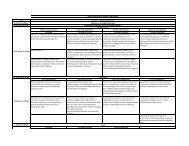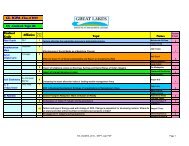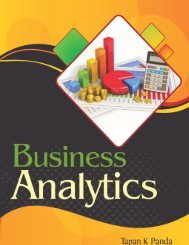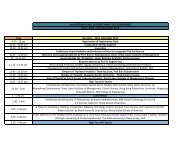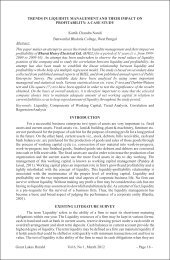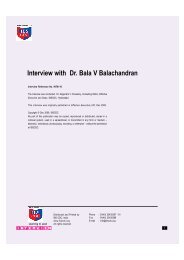Gravity Magazine_Final - Great Lakes
Gravity Magazine_Final - Great Lakes
Gravity Magazine_Final - Great Lakes
You also want an ePaper? Increase the reach of your titles
YUMPU automatically turns print PDFs into web optimized ePapers that Google loves.
GUEST LECTURES<br />
31<br />
Many a Slip<br />
Between the Cup and the Lip…<br />
Prof. Aswath Damodaran<br />
Prof Aswath Damodaran is the Professor of<br />
Finance at the Stern School of Business, New York<br />
University.<br />
Prof Damodaran is recognized worldwide as the<br />
leading mind and expert in the area of Valuation.<br />
His website has enabled many students and<br />
corporates to learn the concept concisely.<br />
The audience was spell bound and engaged on the<br />
intricacies of valuation. Prof Damodaran shared<br />
with us his three fundamental rules of valuation a)<br />
Remember when you are bidding against someone<br />
and when u are not; b) Words like synergy, growth<br />
potential have no value & c) Without Cash flows,<br />
no valuation is possible. He advised us not to follow<br />
the herd mentality like the way of the lemmings and<br />
to stop and think and re-look the fundamentals and<br />
value drivers. According to him, valuation gives us<br />
a life vest i.e. it justifies perceptions.<br />
He demystified the myth that valuation is a search<br />
for true value by stating that valuation was biased<br />
and it was only a question of how much and in<br />
which direction. He also stated that the bias and the<br />
magnitude to valuation are directly proportional to<br />
the amount paid to the person doing the valuation.<br />
Another secret he shared with the students when<br />
doing a valuation was not to come back with a nice<br />
round figure but to always end the final figure in<br />
decimals as it has the potential to create an amazing<br />
illusion.<br />
He also lamented the sad state today of price being<br />
paid arrived at first and then a valuation done to<br />
justify the same. He stressed the importance of<br />
liquidity and control by using the example of Mittal<br />
Steel's bid on Arcelor. The real value of control is<br />
because L.N. Mittal feels he can run Arcelor better<br />
than the current top management. He also stated<br />
that hostile acquisitions are no longer done on<br />
financial terms but to quench one's emotions. He<br />
also cited the case of Time Warner's acquisition of<br />
AOL as among the worst in the history of M&A in<br />
corporate America.<br />
The second myth that he demystified was that a<br />
good valuation provides a precise estimate of value<br />
but in reality, there are no precise valuations. He<br />
also stated that the payoff to valuation is greatest<br />
when valuation is least precise. The third myth he<br />
demystified was the notion that the more<br />
quantitative the model, the better the valuation. The<br />
fascination for a quantitative model by most<br />
investment banks has led them to create complex<br />
models but has later resulted in what he calls 'input<br />
fatigue'. He provided examples of how simpler<br />
valuation models do much better than complex<br />
ones. He used the three methods of a) Discounted<br />
cash flow model b) Relative valuation c)<br />
Contingent claim valuation to value two Indian<br />
companies Wipro and Tata Chemicals, to highlight<br />
its practical use.






